Posts Tagged: UC Davis Department of Plant Sciences
Unripe cantaloupe? Could be, the electronic nose knows
You know how it works: You stand in the grocery aisle, surreptitiously sniffing the cantaloupes, hoping your nose will lead you to a nice, ripe selection. But when you slice it open in your kitchen, it’s just not as ripe as you had hoped. Lucky for you (and me), UC Davis Department of Plant Sciences Assistant Professor Florence Negre-Zakharov and her team may have found a way to make imperfectly ripe fruit a thing of the past.
"We are involved in a project geared towards developing rapid methods to evaluate ripeness and flavor of fruits," explained Negre-Zakharov, who authored a paper on the method published in the March 30 edition of the Journal of Visualized Experiments (JoVE). "We evaluated an electronic nose to see if it can differentiate maturity of fruit, specifically melons. The goal is to develop a tool that can be used post-harvest to better evaluate produce, and develop better breeds."
When fruit ripens, it develops a characteristic volatile blend, indicating its maturity. Traditionally, the gold-standard of evaluating these volatiles has been gas chromatography, but it takes up to an hour to analyze a single sample, which makes it impractical to use outside the lab. Negre-Zakharov’s team wanted to determine if the much cruder — but much faster — electronic nose was able to determine if the melon they used in the experiment were ripe. It was.
"It’s quite encouraging technology for the purposes of determining maturity," she said.
"It's very impressive that the electronic nose system can do a type of gas chromatography in about a minute,” said JoVE science editor Zhao Chen. “Ultra-fast, indeed. Also, the sample preparation is as easy as making a smoothie at home. Such a user-friendly system could greatly help analysis efficiency in this field. Given the popularity of JoVE video-articles, I expect many researchers will know and adopt this method in their own research."
As a next step, the team is testing the electronic nose out in the field to see if it can still determine fruit maturity despite interference from all the background smells like soil and farm air. They hope to have results from those tests soon.
You can access a video of the study here.
UC Davis plant breeding: nurturing a rare breed
While working in Tanzania on community development projects several years ago, Iago Lowe came to a life-changing conclusion:
Food security is central to projects that make a lasting difference in people's well-being. It ensures that communities have the seeds, soil, water and environment to produce enough to eat.
However, his bachelor's degree in physics and religion from Dartmouth College did not adequately prepare him to spearhead those kinds of projects.
To address that gap in his ability to "make some small difference in the world," Lowe started doctoral studies at UC Davis in 2007 in plant breeding and genetics.
"There are so many needs in developing nations — for schools, roads, water, other infrastructure — but when the money and people leave, so often the projects die," said Lowe, who completed his Ph.D. in Plant Breeding and Genetics at UC Davis in 2011. "The few projects I saw that continued to thrive, that really made a tangible difference in people's lives, almost always dealt with local food security, seed systems, soil and water conservation and ecological restoration — projects that demanded a set of skills I didn't have. After studying plant breeding at UC Davis and that's no longer the case."
Lowe exemplifies a new breed of plant breeders at UC Davis. Long a global leader in plant breeding, UC Davis has been retooling its programs — offering new training, creating new curriculum, hiring new faculty (as the budget allows) and conducting world-class research to meet a growing demand for new crops and for breeders.
The new generation of scientists that those programs will produce — and their research breakthroughs — can't come soon enough for industry, government and philanthropic foundation leaders who say that a shortage of plant breeders is hampering efforts to alleviate hunger around the world. Hundreds of high-paying industry jobs for plant breeders are going unfilled.
“Plant breeding is such a vital tool for helping us deal with significant challenges in the 21st century such as food security, population increase, urbanization, and water and energy shortages," said Xingping Zhang, a watermelon breeder with the Davis-based seed company Syngenta. "Who is going to educate the plant breeders? UC Davis is in a perfect position to do so because it's a great center of science and technological inventions, located right in the heart of agricultural abundance. No place in the world offers the diversity of crops [like those] grown in California."
In another major nod to UC Davis expertise, the U.S. Department of Agriculture awarded $40 million in grants earlier in 2011 to develop climate-change-tolerant plants and new bioenergy sources. UC Davis scientists will lead two research teams from more than 50 universities in more than 20 states.
"Each of these projects features transdisciplinary, regional, integrated teams, including scientists from institutions that represent underserved populations," said Roger Beachy, director of the USDA's National Institute of Food and Agriculture, in announcing the grants at UC Davis. "This approach represents a new paradigm in how USDA science can best solve critical issues facing agriculture today."
You can read more about the history and future of plant breeding at UC Davis in this article in the UC Davis Magazine.
Learn more:
UC Davis plant breeding education
Story on UC Davis Department of Plant Sciences website
Seed Biotechnology Center videos on plant breeding
More young people see future in farming
The USDA is gearing up for the 2012 Census of Agriculture, the complete count it makes every five years of U.S. farms and ranches and the people who operate them. The agricultural census provides a fascinating look at farming demographics: How old are they? Where do they live? What do they grow?
Most experts believe the census will show a trend towards the green – not just green as in sustainable, local and small-scale - but also green as in greenhorn. It seems more people from non-farming families are seeking farming careers. (You can read an Associated Press story on the topic here.)
That is especially good news in California, where the current average age of a farmer is nearly 60. Farming is a $37.5 billion business in California employing 800,000 people and providing 12 percent of the nation’s agricultural exports. With the world population forecast to grow from 7 billion to 9 billion by 2050, the demand for California’s food production will continue to grow.
Will California’s farmers be able to meet that need? The UC Davis Department of Plant Sciences is helping by providing cutting-edge research and educating a whole new crop of young people eager to take on the back-breaking work of farming the land.
“We’re definitely seeing an increased interest in farming among students,” says Crop Physiology Professor Ted DeJong, a faculty adviser for the department’s Horticultural and Agronomy Graduate Group, a popular major for students interested in farming and other aspects of agriculture. Indeed, student enrollment in horticulture and agronomy has increased from 53 in fall 2008 to 92 in fall 2011.
“Yes, I do think more young people are interested in farming,” said Gina Garland, who received her master's degree in horticultural and agronomy from UC Davis last spring. “Food is so important and it’s not very secure right now, with climate change and all. Many of us are interested in trying to find ways to make farming work in our changing environment.”
Garland is now working with AmeriCorps and a non-profit group in Albuquerque, N.M., farming and helping others farm. She might not become a farmer herself, choosing, perhaps, to seek a Ph.D. (hopefully, she says, at UC Davis), conducting research to help others farm more profitably and sustainably.
Meanwhile, at the UC Davis Agriculture Sustainability Institute Student Farm, young people are hoeing weeds, harvesting carrots and learning the joys and challenges of farming.
“It’s good to know where your food comes from,” says Eric Lynn, and undergraduate plant sciences student. “I think that’s what attracts a lot of us to farming.”
The high cost of farmland in California makes it tough for young people to enter the business, as noted in this recent story in the Western Farm Press. But many are finding ways to make farming pay by producing vegetables for sale at local restaurants, for example, or marketing their produce online. From urban roof-top gardening to using the latest in conservation agricultural practice, a new, younger breed of farmer is heeding the call. You can read more about that in this recent story on sfgate.com.
Also, have you heard about the Center for Land-Based Learning? Located in Winters, just west of campus, this non-profit is dedicated to creating the next generation of farmers and teaching California’s youth about the importance of agriculture and watershed conservation. You can learn more at: http://landbasedlearning.org/
I say tomato!
Here we are, a month into summer, and one of my favorite fruits is starting to emerge: Luscious tomatoes, fresh off the vine.
I know, most of us treat tomatoes like a vegetable in the kitchen, slicing and dicing them into dishes that are savory rather than sweet. Botanically speaking, tomato is a fruit because it’s developed from the ovary in the base of the flowers and contains the seeds of the plant (though cultivated forms may be seedless.)
No matter, the tomato is a nutritional powerhouse any way you cut it, loaded with vitamin C, vitamin A, potassium and lycopene, an antioxidant credited with preventing both cancer and heart disease.
The UC Davis Department of Plant Sciences devotes many resources to tomato production, helping large- and small-scale growers, organic and otherwise, control weeds, manage pests, fight disease and tackle all the other adventures farming can bring. The department is also home to the C.M. Rick Tomato Genetic Resource Center, the largest known collection of tomato seeds in the world. You can’t breed a better tomato without diversity of genetic tissues, and the repository and its abundance of wild species are the sources of resistance to 44 major tomato diseases and at least 20 insect pets – not to mention improved fruit traits like tolerance to saline conditions and drought.
Of course, growing or buying a tomato is only part of the equation. How do you make sure the fruit of your labor is tasty and safe? Here are some helpful hints from the UC Davis Postharvest Technology Center, a handy resource for all your postharvest technology needs:
How to choose: A ripe tomato will be plump, vibrant in color and fairly firm to the touch. You want it to have a little give, but not much. Ageism aside, avoid a tomato with wrinkles.
How to store: Keep tomatoes at room temperature, away from direct sunlight, with the stem scar (the belly button, if you will) facing up to reduce softening and darkening of the fruit. It’s best to eat them within two or three days, though some tomatoes are perfectly fine for about five days. Store tomatoes unwashed and then rinse them under running water before eating.
How to prepare: After rinsing your tomato well, wipe it dry and cut away the stem scar and surrounding area before slicing into it. Don’t wash tomatoes in a sink filled with water (nor use soap or detergent) because tomatoes can absorb contaminated water and soap residue through its stem scar. Cut or chopped tomatoes (and dishes like salsa) should always be covered and refrigerated if not consumed within two hours or preparation. Cut tomatoes will last one or two days in the refrigerator.
How to enjoy: Enjoy them every which way! It would be hard pick my favorite tomato recipe, but you can’t go wrong with this fast, fresh salad:
Tomato platter special
Four fresh tomatoes of any color or variety
Two red onions
Two orange, yellow or red bell peppers
A few sprigs of basil
Your favorite vinaigrette
Four ounces Feta cheese
Slice the produce into circles and fan them out on a platter in an attractive, alternating order. If you have fresh cucumbers, they fit nicely in this flower, as well. Drizzle with vinaigrette, crumble on some Feta cheese, give a few grinds of fresh pepper and few shakes of salt and place basil sprigs on top.
Delish.
You can read more tomato tips from the Postharvest Technology Center here and explore many more of their practical publications here.
Why does my pesto turn brown?
I don’t know if plant scientists make better chefs, but knowledge of plant science can certainly improve our cooking. Take, for example, understanding how to handle oxidation, the interaction between oxygen molecules and all the many substances they may contact. Oxidation is what makes your fender rust and your copper penny turn green. As it relates to plants, oxidation is what causes fresh-cut produce to turn brown and wine to lose its flavor when left too long in an open bottle.
Perhaps you know how to thwart oxidation when preparing potatoes and serving sliced apples (and if not, we’ll get to that in a minute) but here is a less-common food that often falls victim to oxidation: pesto. Has this happened to you? You gather an armload of picture-perfect basil, blend it together with olive oil, pine nuts, garlic and cheese and produce a fantastic pesto sauce for your spaghetti. Fresh from the blender, it’s as green as your holiday tree. But by the time you serve it an hour later, it’s a dull shade of olive brown and has lost much of its taste. Oxidation strikes again.
Here’s a handy plant-science trick: Blanche your basil. Heat destroys the enzymes that cause oxidation and the resulting discoloration. Drop your fresh basil in a pot of boiling water for a few seconds and then shock it in a bowl of ice water. Dry it completely, proceed with your favorite recipe and your pesto will stay green and tasty for days. Here’s the recipe I like to use:
- 2 cups packed fresh basil leaves
- 2 cloves garlic
- 1/4 cup pine nuts (I use walnuts when I don’t have pine nuts)
- 2/3 cup extra-virgin olive oil, divided (for special treat, try using a UC Davis olive oil
- Salt and pepper, to taste
- 1/2 cup parmesan or other hard cheese
Combine the basil, garlic and nuts in a food processor or blender and pulse until coarsely chopped. Add 1/2 cup of the oil and process until fully incorporated and smooth. Season with salt and pepper.
If you’re eating it right away, add all the remaining oil and pulse until smooth. Transfer the pesto to a large serving bowl and mix in the cheese. Yum! If you’re freezing it (up to three months), transfer to an air-tight container and drizzle remaining oil over the top. Thaw and stir in cheese.
You can learn more about handling fresh-cut produce at the UC Davis Postharvest Technology Center and explore the joys of plant science at the UC Davis Department of Plant Sciences website.


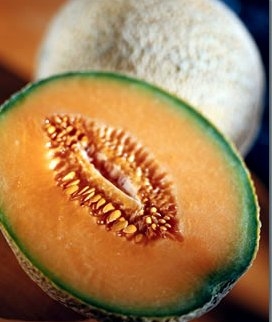
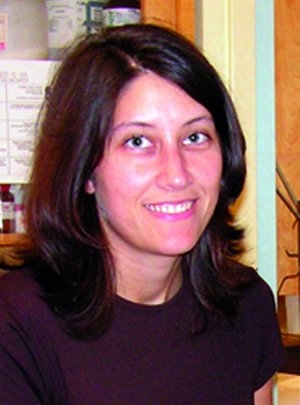

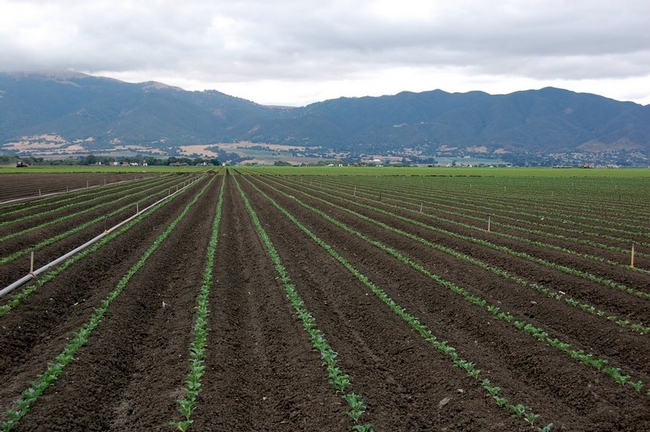

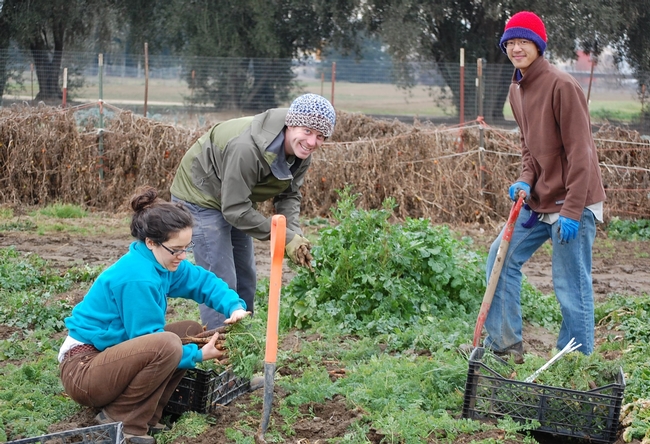
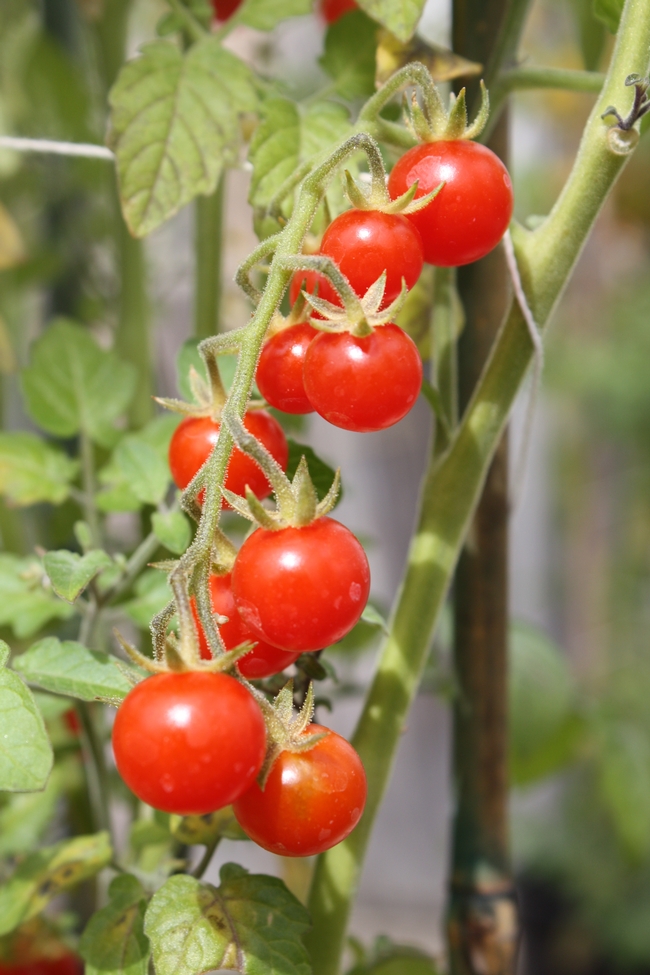
![3767 026[1] 3767 026[1]](http://ucanr.org/blogs/food/blogfiles/5750.jpg)